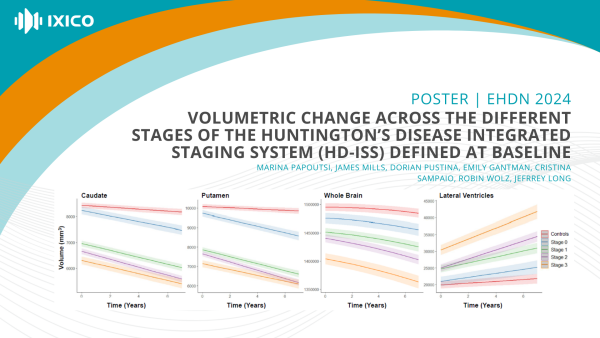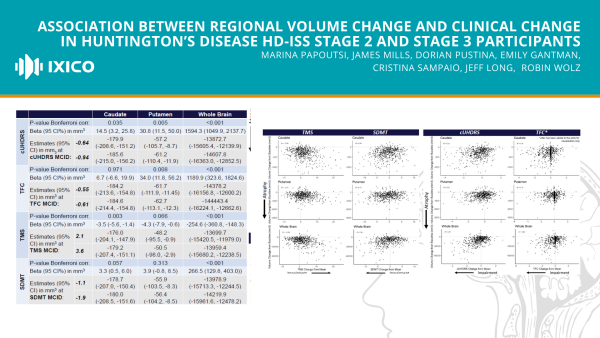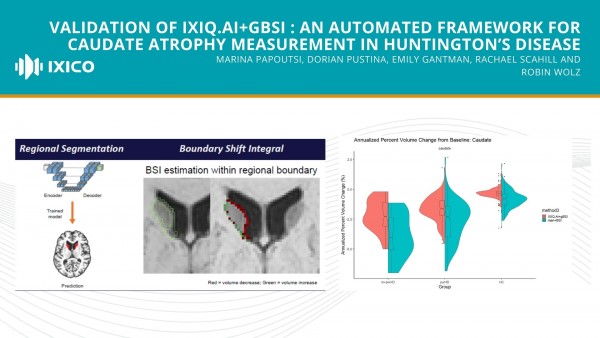Comparison of two natural history studies as part of the HD-IH consortium: a use case for historical external control group matching in clinical trials
External control groups can support regulatory decision-making in clinical trials, especially rare diseases. In Huntington’s disease (HD) there is a wealth of historical data, but matching historical data to clinical trials is challenging.
Neuroimaging to Facilitate Clinical Trials in Huntington’s Disease: Current Opinion from the EHDN Imaging Working Group - IOS Press
This comprehensive overview of the roles of structural, functional, and diffusion MRI, PET, MRS, and MEG serves as a resource for effectively integrating neuroimaging methodologies into the design and execution of Huntington's disease clinical trials. The paper discusses their applications in patient selection, safety monitoring, and demonstrating efficacy.
Volumetric change across the different Stages of the Huntington’s disease Integrated Staging System (HD-ISS) defined at baseline
The HD Integrated Staging System enables classification of people with HD into four disease stages based on quantitative landmark assessments. Here we characterized volume change over time in the caudate nucleus, putamen, lateral ventricles, and whole-brain across participants starting in each of the different HD-ISS Stages at baseline and compared to healthy controls.
Association between regional volume change and clinical change in Huntington’s disease HD-ISS Stage 2 and Stage 3 participants
For HD-ISS Stage 2 and Stage 3 participants, whole-brain volume shows significant association with clinical change for all four clinical variables examined here. For caudate and putamen volume, the association depended on the clinical variable. Our results provide further evidence on the use of volume change as a surrogate endpoint.
Validation of IXIQ.Ai+gBSI : an automated framework for caudate atrophy measurement in Huntington’s disease
We have developed a fully automated framework that uses deep learning for caudate segmentation (IXIQ. Ai) and generalised BSI (gBSI) for longitudinal measurements. Here, we validate the new method by comparing its volumetric scores with those of the standard manual pipeline (Man+BSI). Man+BSI produced larger caudate volumes than IXIQ.




